Traveling is undoubtedly a thrilling experience, broadening one’s perspectives and introducing new cultures, traditions, and gastronomies. But let’s not beat around the bush; it often carries a hefty price tag, with food bills often devouring a significant portion of the travel budget. Smart globetrotters understand that economizing on meals doesn’t equate to forfeiting taste or authentic experiences; it’s all about striking balance and informed decision-making. By mastering the art of discovering local eateries, making use of grocery stores, and harnessing kitchen facilities when available, you can relish the culinary delicacies at your destination without having to rob a bank.
As we proceed in this piece, we’ll unmask the secrets behind dining cost-effectively while roaming about—turning budget eating from a mere necessity into an exhilarating adventure. You’ll be surprised at how engrossing it is to dine like the locals do. We will lead you by your nostrils towards rewarding dining spots where prices are friendly for your pocketbook too! Sometimes, believe us when we say this: The best meal may not be waiting for you in some Michelin-starred eatery but may be bustling under an open-sky market stall.
Let’s sink our teeth into key insights that will arm you with savvy tricks that enable you to spoil your taste buds without emptying your wallet as we delve deep into savoring global flavors within a budget.
Fundamental Tips
1. Give priority to local markets and street food over swanky restaurants; these generally offer more economical options, boasting authenticity and freshness. Exploring local food hubs isn’t only lighter on the wallet but doubles up as cultural exposure, offering travelers firsthand tasting opportunities of regional specialties from farm-to-fork or sea-to-plate!
2. Wherever possible, plan ahead; self-cook some meals. Accommodations equipped with kitchen facilities enable significant savings as cooking bulk amounts allows repurposing leftovers later on. Even lacking a full-fledged kitchen, basic appliances like a rice cooker or mini-burner empower whipping up simple dishes economically.
3. Maintain meal-time flexibility; cash in on happy hours or lunch deals; these usually cost less compared to peak dining hours. Many outlets offer discounts to entice clients during off-peak slots—same-quality food but cheaper!
4. Always tote along a water bottle and some snacks to prevent impulsive purchases when hunger pangs strike hard. Keeping hydrated and having handy snackables such as nuts, fruits, or granola bars can stave off sudden hunger bursts, thereby avoiding overspending on pricey fast-food options.
5. Leverage technology in your favor: pre-research and price-compare local eateries online; use apps and websites catering to budget-watchful travelers, offering discounts, reviews, tips, and directions towards pocket-friendly eating joints. It not only cuts down on expenses but also saves time, enabling better time management while traveling.
Want to cut down on food costs while traveling? Here’s How!
Unearth Local Produce Markets and Supermarkets
When you’re traveling on a budget, one savvy hack is to scout out local markets or grocery stores for your food fix. They often stock fresh, homegrown produce at prices that are far more wallet-friendly than what restaurants charge. Buying fruits, veggies, and other staples allows you to rustle up simple yet nutritious meals if your lodging has kitchen facilities or even has limited resources. What’s more, it offers an immersive experience of the food culture of the place while letting you in on regional specialties off the beaten tourist track.
Street Food: Your Friend
When it comes to genuine local cuisine that won’t blow a hole through your pocket, street food is king! Many countries around the globe offer diverse street foods that serve up tasty grub at throwaway prices. Just make sure to pick stands swarming with locals and maintain good hygiene.
Ditch Restaurants for Picnics
Replacing restaurant dining with picnics can significantly trim down your food expenditures while traveling. Shopping for ingredients from local vendors and whipping up a meal in picturesque surroundings can be as enjoyable as it’s economical!
Try meal-sharing and culinary exchange programs.
Platforms offering meal-sharing experiences or culinary exchange programs often connect travelers with locals who host meals. This is usually an economical way to have a homemade meal experience while also deep-diving into local customs and traditions. Quite often, hosts might not charge at all or only ask for modest compensation.
Complimentary Hotel Breakfasts: Make Most of It!
If free breakfast is included with accommodation, that’s a significant amount saved right there! A solid, high-protein breakfast could keep hunger pangs at bay until late afternoon, saving costs on big lunches while still leaving you fuelled enough for sightseeing.
Discount Apps & Happy Hours: All-Round Win!
Numerous apps specialize in spotting discounts or happy hour deals where travelers can grab a bite at a fraction of the usual cost. Choosing these options often involves dining out during off-peak hours or selecting from a limited menu, but it’s worth considering for substantial savings.
Plan your meals and snack sensibly.
Planning your meals for the day along with packing snacks from local shops helps avoid spontaneous, costly food purchases. Keeping hunger satiated with snacks on hand like granola bars, fruit, or nuts and staying hydrated by refilling water bottles could save you from splurging on overpriced convenience foods.
Accommodation with Kitchen Facilities: A Life-Saver!
If possible, booking accommodation that provides kitchen facilities means you get to cook your own meals, saving big bucks compared to eating out every meal. Hostels, apartments, and hotels offering such utilities are your best bet!
Scout Out Local Dining Specials
Many local restaurants typically offer daily specials or set menus with reduced prices. It’s always good to keep an eye out for these deals, which offer the same restaurant experience without making much of a dent in your budget.
Budget Restaurants and Eateries: The Way to Go
Finding budget-friendly eateries is crucial when trying to conserve funds on food while traveling. Each destination will have dining options frequented by locals conscious of spending wisely; researching online travel forums or asking around should bring up some interesting choices.
What’s the Best Way to Dine on a Dime While Hitting the Road?
- Set a daily food budget and stick to it.
- Opt for well-rounded meals featuring local produce—they’re both healthy and wallet-friendly.
- Engage with the local community via meal-sharing experiences—it could be a free or low-cost way of dining.
- Choose accommodations offering complimentary breakfast or having cooking facilities—this can save significant meal costs.
- Use food discount apps to find deals and happy hours nearby.
- Take along snacks and a refillable water bottle to avoid unnecessary purchases.
- Scout out local eateries for daily specials and set-price menus.
- Skip touristy diners; go native by trying pocket-friendly local food joints.
Looking for budget-friendly meal choices when traveling?
When traveling economically, street food, local markets, or even preparing your own meals (if you have access to kitchen facilities) are your best bets. Street foods allow you to get a genuine taste of local flavors at much lower prices than restaurants. Markets are perfect spots for fresh produce while also boasting stands selling inexpensive ready-to-eat fares. If your accommodation has cooking amenities, grocery shopping followed by some culinary DIYs could significantly lower your expenses.
Wondering how to save money on food during travel without jeopardizing nutrition?
To economize without compromising nutrition, focus on whole foods like fruits, veggies, grains, and legumes. They’re generally healthier as well as lighter on your pocket compared to processed foods. Opt for balanced meals that offer an adequate mix of proteins, carbs, and vegetables when eating out.
Any apps or websites that could help me find affordable eateries while traveling?
Indeed! Numerous apps and sites aid in locating economical dining alternatives. Yelp, TripAdvisor, and HappyCow (for vegetarians and vegans) let users filter restaurants by price range apart from providing reviews.
Is it cheaper to cook or eat out when I’m on the move?
This is circumstantial. Depending on the region, chowing down street food or dining at modest local eateries may be as affordable (sometimes even more so) as self-cooking. On the flip side, in pricier locales or if there’s access to a kitchenette, grocery shopping followed by DIY cooking could turn out to be cheaper.
How to Curtail Food Expenditures When Globetrotting?
To lower food expenses while traveling, consider heavy breakfasts (often included in your lodging), pack snacks and reusable water bottles for the day, and restrict dining out to one meal per day. Additionally, exploit local happy hours or lunch deals when prices are substantially reduced.
Can I Still Maintain A Healthy Diet While Eating Economically During My Travels?
Absolutely! By picking whole foods and seasonal produce—typically more budget-friendly—you can eat healthily. Several countries offer an array of fresh fruits and vegetables, which are healthier and cheaper compared to processed treats.
What Foods Should I Sidestep to Stay Within My Budget?
Try avoiding frequent visits to touristy restaurants or fast-food chains known for their steep pricing. Also avoid buying food around major tourist landmarks—prices here are inflated.
Opt instead for eateries that locals prefer.
How Can I Preplan Meals to Save Money While Traveling?
Do your homework before reaching your destination—list down economical eateries and supermarkets beforehand. Plan meals based on where you’ll be each day, preventing expensive last-minute purchases.
If possible, book accommodations offering complimentary breakfast or kitchen facilities that enable you to cook meals.
What Kind of Lodging Should I Opt For To Save On Food Costs?
Choose lodgings that come with a kitchen or kitchenette, allowing you to prepare meals yourself. Hostels, apartments, and Airbnb rentals are usually equipped with these amenities. Some lodgings offer free breakfast or have common kitchens, enabling self-preparation of food and saving money on at least one meal a day.
Is it sensible to pack my own food while traveling?
For short trips or if you can store food, bringing along your own edibles might be feasible. Non-perishable snacks like nuts, granola bars, and dried fruits could definitely cut costs. However, for longer journeys, it’s usually more practical to buy locally given the constraints of luggage space and weight.
In Summary
Feasting on a budget during travel doesn’t equate to skimping on flavor or dietary value. A tad bit of pre-planning combined with adaptability can enable you to sample an assortment of local delicacies without taxing your wallet too much. Tactics like trying out street food, employing technology for hunting down deals, and choosing self-catering accommodation facilities could enrich your gastronomical journey while being economical.
Remember that exploring different and affordable ways to relish meals while touring new places is part of the thrill. Applying the same judicious, penny-wise approach to dining as you would in other facets of travel not only proves cost-effective but amplifies your overall travel experience by fostering a deeper bond with local cultures. As you traverse more places, you’ll become better versed in maneuvering through diverse culinary terrains, ensuring every meal leaves a positive imprint on your travel memories without causing any financial strain.






